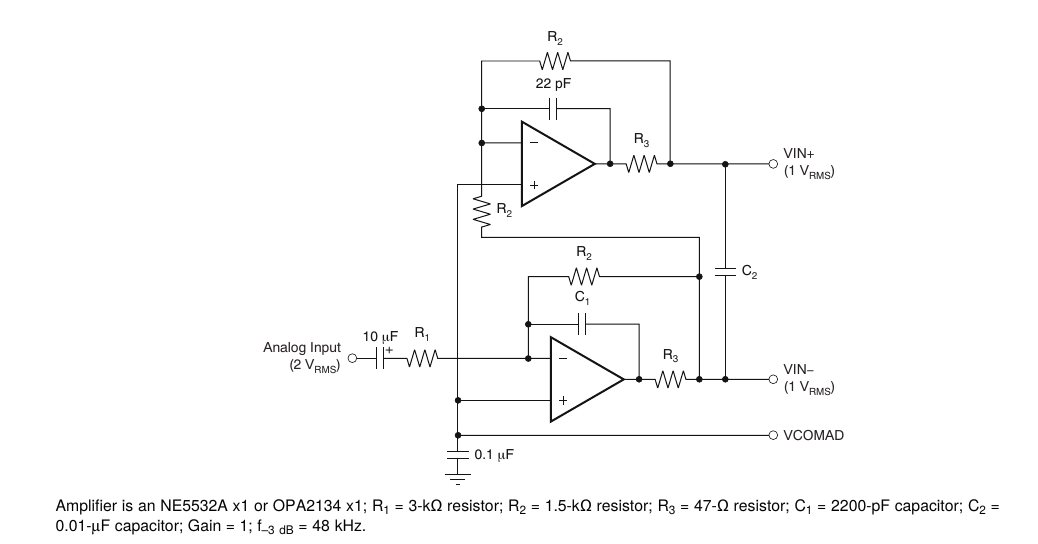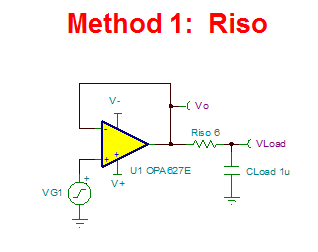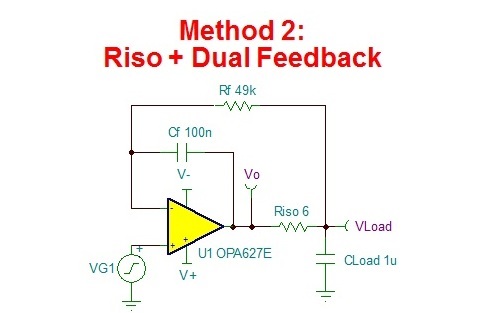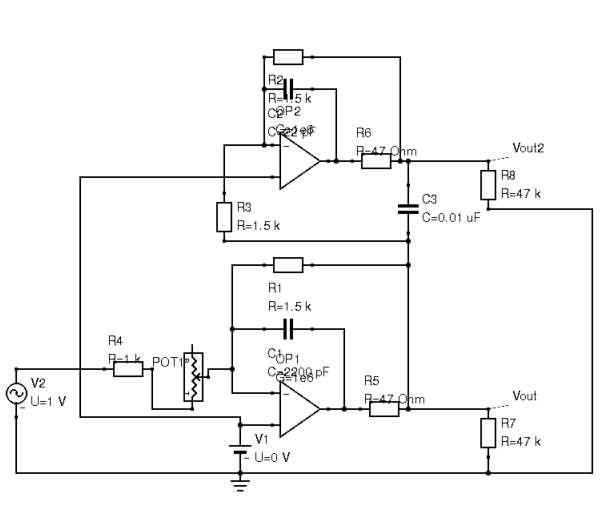Hi:
I've been using PCM3168 for some time, for audio applications...
For the analog inputs i used the burffer shown in the datasheet:
I used it blindly cause what was important for me was making the codec work... but now i took a closer look...
Please correct me if im wrong:
The opamp of the bottom is just an inverter amplifier, with gain 0.5, and with a capacitor to cut waves above arround 48Khz... am i right?
Now the opamp of the top is another inverter amplifier with gain 0.5, whith it's input conected to the output of the first opamp... so combinign the two singals the total gain is 1 (0.5 in each differencial signal) and i have the desired differential output...
My question is... what is the 22pF capacitor of the top amplifier for? if the output of the first amplifier is already cut in 48kHz... wouldnt the output of the second be already cut at that frecuency? I know that the difference is not much, cause 22pF is just 1% of 2200pF, but shouldn't it work better without the 22pf capacitor? Or is something about the specific characteristic of this opamp what makes this necessary?
Thanks





